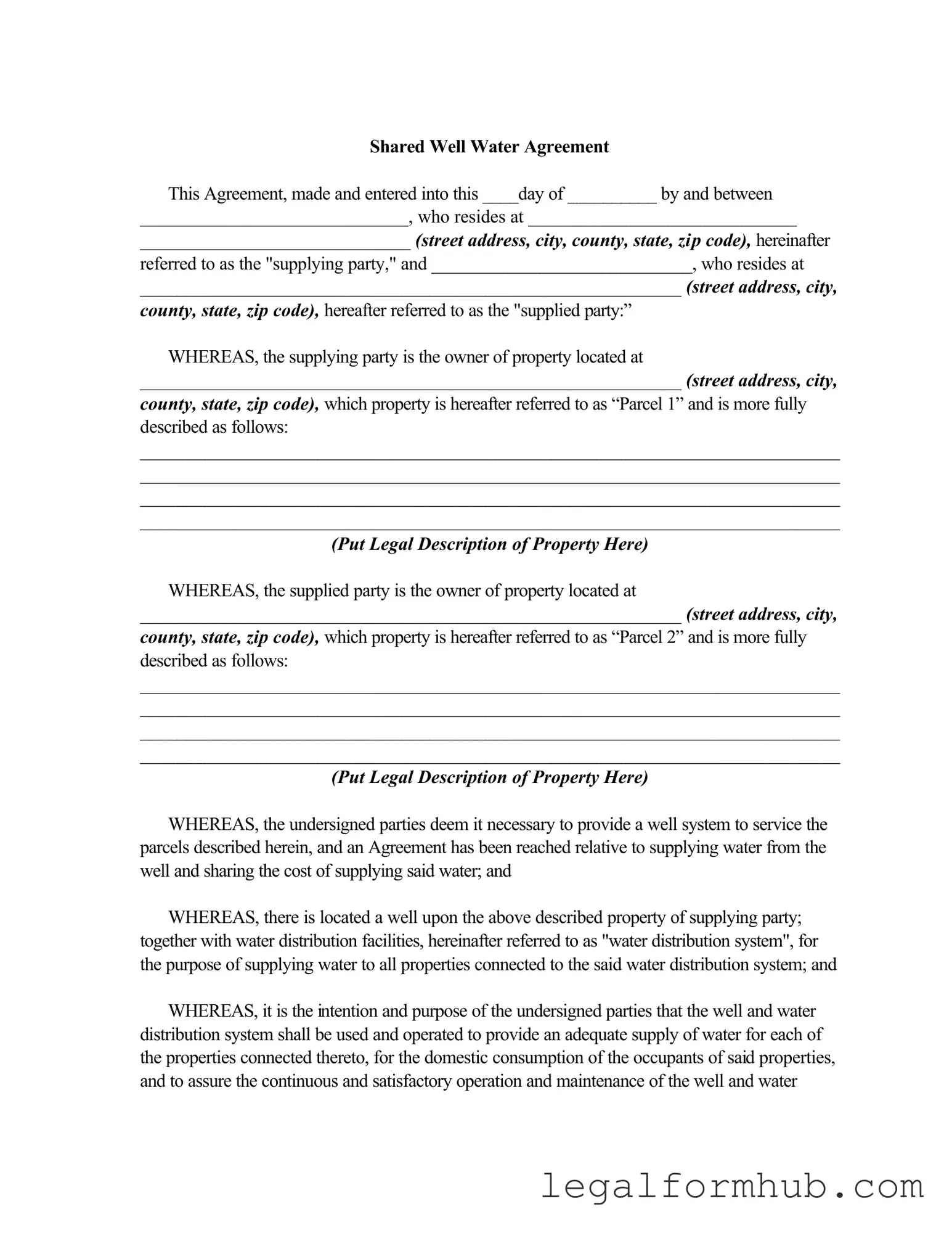The Shared Well Agreement is similar to a Water Supply Agreement. Both documents outline the terms under which water is provided to multiple parties from a single source. They specify the rights and responsibilities of each party, including payment obligations for water usage and maintenance costs. The Water Supply Agreement may also include provisions for emergency access and procedures for addressing disputes, similar to those found in the Shared Well Agreement.
Another document that resembles the Shared Well Agreement is a Joint Use Agreement. This type of agreement typically governs the shared use of facilities or resources among multiple parties. In the context of a shared well, a Joint Use Agreement would detail how the well and its distribution system are to be used, maintained, and managed collaboratively, ensuring that all parties benefit equitably from the shared resource.
A Partnership Agreement may also share similarities with the Shared Well Agreement. In a partnership, two or more individuals or entities agree to collaborate for a common purpose, which can include sharing resources such as water. This document would outline the contributions, responsibilities, and profit-sharing arrangements among the partners, akin to how the Shared Well Agreement delineates the rights and obligations of the supplying and supplied parties.
The Shared Well Agreement is akin to a Community Water System Agreement. Such agreements are formed when a community comes together to establish a water supply system for shared use. They typically include provisions for maintenance, costs, and access rights, mirroring the provisions found in the Shared Well Agreement for the use and upkeep of the well and water distribution system.
Another comparable document is a Utility Easement Agreement. This agreement allows one party to use another party's property for utility purposes, such as water lines. The Shared Well Agreement includes easement provisions that grant access for maintenance and operation of the water system, similar to how a Utility Easement Agreement would facilitate access to utility infrastructure.
A Maintenance Agreement is also similar, as it outlines the responsibilities of parties in maintaining shared property or resources. In the context of a shared well, this document would specify who is responsible for maintenance tasks and how costs are to be shared, paralleling the maintenance obligations described in the Shared Well Agreement.
A Lease Agreement can be compared to the Shared Well Agreement in terms of outlining the rights and obligations of parties regarding property use. While a Lease Agreement typically pertains to the rental of property, it may include clauses that govern shared resources, such as water supply, similar to how the Shared Well Agreement delineates water usage rights.
When considering educational options, it's crucial for parents to understand the necessary documentation, such as the arizonapdfs.com/homeschool-letter-of-intent-template, which provides a formal avenue to inform the state about their decision to homeschool. This letter, much like other shared agreements in collaborative environments, serves as a structural guide that outlines responsibilities and commitments, ensuring clarity and compliance within the homeschooling framework.
The Shared Well Agreement is also similar to a Water Rights Agreement. This type of agreement establishes the rights of individuals or entities to use water from a particular source. It specifies the quantity of water each party can use and the conditions under which the water can be accessed, much like the stipulations found in the Shared Well Agreement regarding water usage and distribution.
A Cooperative Agreement may also bear resemblance to the Shared Well Agreement. In a cooperative, members work together towards a common goal, which can include sharing resources such as water. The agreement would outline each member's rights, responsibilities, and financial contributions, similar to the collaborative nature of the Shared Well Agreement.
Finally, a Service Agreement can be compared to the Shared Well Agreement. This document typically outlines the terms under which one party provides services to another. In the case of a shared well, the supplying party provides water services to the supplied party, and the agreement details the conditions of service, including payment and maintenance obligations, akin to the provisions in the Shared Well Agreement.
